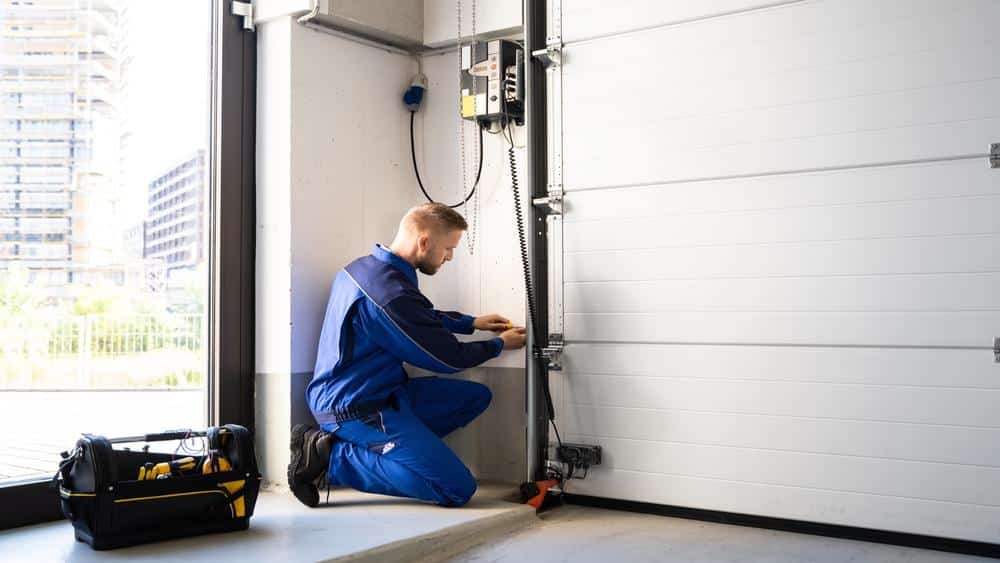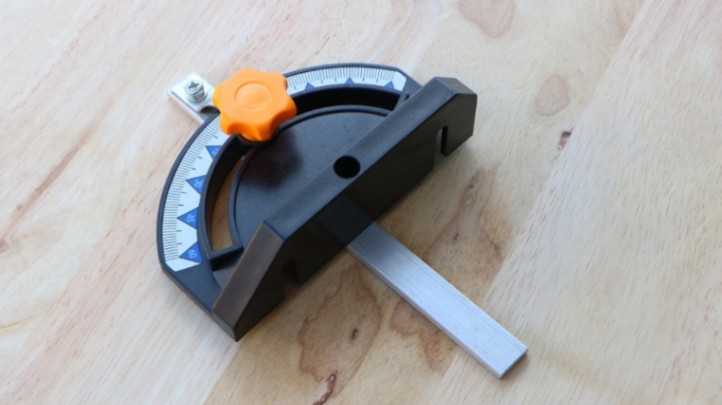When it comes to soldering circuit boards, having the appropriate soldering iron tip can make a significant difference in the quality of your work. The right tip ensures efficient heat transfer and precise solder application, minimizing the risk of damaging delicate components. In the following sections, we will discuss best soldering iron tip for circuit boards and the importance of choosing the correct soldering iron tip and provide tips and recommendations to help you find the best one for your needs.
| No | Product Name | Image | Specialty | Price |
|---|---|---|---|---|
| 1 | The Hakko T18-B Conical Soldering T |  |
Best for beginners | Check Price |
| 2 | 900M Soldering Iron Tips |  |
Budget-friendly | Check Price |
| 3 | AiCE Tls 10 PCS Weller ET Replacement Soldering Tips |  |
Durable and long-lasting | Check Price |
| 4 | Aoyue Chisel Type Soldering Tip |  |
Versatile and multipurpose | Check Price |
| 5 | Hakko T18-B Conical Soldering Tip |  |
High-quality professional option | Check Price |
It’s important to note that the categorization of soldering iron tips can vary depending on individual preferences and specific project requirements. It’s recommended to consider factors such as the type of work, skill level, and budget when selecting a soldering iron tip.
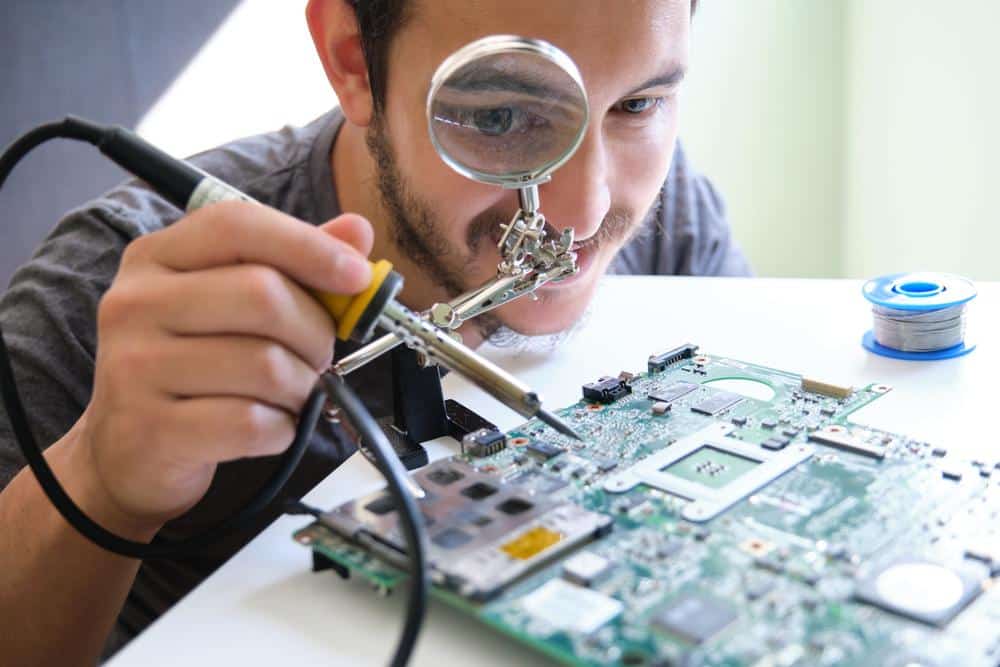
1. Types of Soldering Iron Tips
When it comes to soldering, having the right soldering iron tip is essential for achieving precise and clean results, especially when working on delicate circuit boards. There are several types of soldering iron tips available, each designed for specific applications and tasks. Understanding these types can help you choose the best one for your circuit board soldering needs.
I. Pointed Tips
- A. Description
- Pointed tips come to a fine, sharp point and are ideal for detailed work.
- B. Best Uses
- Soldering small components on circuit boards.
- Creating precise solder joints.
II. Chisel Tips
- A. Description
- Chisel tips have a flat, broad shape with a tapered edge.
- B. Best Uses
- Efficiently transferring heat to larger soldering areas.
- Soldering larger components and connectors.
III. Conical Tips
- A. Description
- Conical tips have a cone-shaped profile that tapers to a point.
- B. Best Uses
- Versatile for various soldering tasks.
- Suitable for both fine and broader soldering work.
IV. Bevel Tips
- A. Description
- Bevel tips have a flat, angled surface, making them versatile.
- B. Best Uses
- Soldering at angles and corners on circuit boards.
- Efficiently applying solder to pad areas.
V. Micro Tips
- A. Description
- Micro tips are excellent and delicate.
- B. Best Uses
- Soldering minimal and sensitive components.
- Precision work on miniature circuit boards.
VI. Hoof Tips
- A. Description
- Hoof tips have a rounded shape with a flat surface.
- B. Best Uses
- Creating smooth, rounded solder joints.
- Ideal for drag soldering.
VII. Blade Tips
- A. Description
- Blade tips have a rectangular, blade-like shape.
- B. Best Uses
- Precise soldering along straight edges and surfaces.
- Soldering connectors and flat components.
Choosing the right soldering iron tip depends on the specific requirements of your circuit board soldering project. Consider the size of components, the level of precision needed, and the overall soldering technique you plan to use to select the most suitable tip for the job.
2. Factors to Consider When Choosing a Soldering Iron Tip
Selecting the right soldering iron tip for your circuit board soldering project is a critical decision that can significantly impact the quality of your work. To ensure you make the best choice, consider the following essential factors:
I. Tip Size and Shape
- A. Size Matters
- The size of the tip determines how much heat it can transfer.
- Smaller tips are suitable for delicate, precision work, while more extensive tips are better for more substantial soldering tasks.
- B. Shape Considerations
- The shape of the tip affects your ability to access different soldering areas.
- Pointed tips are excellent for fine, detailed work, while chisel tips are better for broader connections.
II. Temperature Control
- A. Temperature Range
- Ensure your soldering iron can reach the required temperature for your solder and components.
- Some tips work better at lower temperatures, while others require higher heat settings.
- B. Temperature Stability
- Consistent temperature control is crucial to prevent overheating or underheating.
- Invest in a soldering iron with reliable temperature regulation.
III. Material Compatibility
- A. Matching Materials
- Consider the materials of both your soldering iron tip and the components you’re working with.
- Different materials may require specific tip coatings or compositions.
- B. Preventing Contamination
- Avoid cross-contamination by using the suitable tip material for your solder type (e.g., lead-free or lead-based).
IV. Durability and Longevity
- A. Tip Lifespan
- Evaluate the expected lifespan of the soldering iron tip.
- High-quality tips can last longer, saving you money in the long run.
- B. Ease of Replacement
- Check how easy it is to replace the tip when it eventually wears out.
- Some soldering irons offer quick-change systems for convenience.
V. Ease of Maintenance
- A. Cleaning
- Determine how easy it is to clean and maintain the tip.
- Regular cleaning prevents oxidation and extends the tip’s life.
- B. Tinning
- Some tips require periodic tinning to maintain their effectiveness.
- Understand the tinning process and frequency needed.
Taking these factors into account when choosing a soldering iron tip will help ensure that you have the right tool for your circuit board soldering needs. A well-matched soldering iron tip can make your soldering tasks more efficient and produce cleaner, more reliable connections.
3. Best Soldering Iron Tip for Circuit Boards Reviews
I. 900M Soldering Iron Tips

Recently we tested the 900M Soldering Iron Tips for my soldering station and am extremely pleased with the results. These tips offer excellent compatibility with popular soldering stations, ensuring versatility and ease of use across different brands and models.
The quality of these soldering iron tips is outstanding. They are made of high-quality materials, such as oxygen-free copper, which provides excellent heat conductivity and resistance. Some variants are even electroplated with iron and nickel, enhancing their durability and resistance to oxidation. This ensures that the tips maintain their performance even after prolonged use.
The 900M Soldering Iron Tips typically come in multiple tips, offering different shapes and sizes. This variety allows users to select the most suitable tip for their soldering needs. Whether a small, intricate component or a larger joint, these tips provide the flexibility required for precise soldering.
What impresses me the most is the longevity of these tips. With proper use and maintenance, they can last for thousands of soldering joints. This is a testament to their durability and high-quality construction. I no longer worry about constantly replacing tips, as these soldering iron tips offer a long service life.
I have experienced exceptional soldering results using these tips on circuit boards. They provide a stable and consistent heat transfer, ensuring clean and reliable solder joints. The versatility and compatibility of these tips make them a valuable addition to any soldering toolkit.
II. Hakko T18-B Conical Soldering Tip

Hakko T18-B Conical Soldering Tip, which has exceeded my expectations. This soldering tip is a game-changer for anyone involved in circuit board soldering.
The ‘B’ conical shape of the T18-B tip, measuring R0.5 x 14.5mm, provides unparalleled versatility. Its overall design allows me to approach soldering from any direction, making it incredibly convenient and efficient. Whether you’re a beginner or an experienced soldering professional, this tip is an excellent choice for all soldering tasks.
The quality of the Hakko T18-B is outstanding, as expected from Japanese craftsmanship. It fits perfectly with my Hakko FX-8801 soldering iron, offering a seamless connection that ensures optimal heat transfer. The precision and accuracy achieved with this combination are truly remarkable.
I primarily use the T18-B for circuit board soldering, which has proven to be the best soldering iron tip I have ever used. It effortlessly solders delicate components without causing any damage or heat-related issues. I have noticed a significant reduction in soldering errors and improved overall workmanship.
Furthermore, the T18-B is compatible with other Hakko soldering irons, such as the FX-8803 and FX-8805, as well as soldering stations like the FX-888D, FX-889, FR-701, and FR-702. This compatibility ensures its usability across various setups, making it a versatile choice for soldering professionals.
III. Hakko T18-B Conical Soldering Tip

We tested the FEITA Soldering Iron Tips T15 SMD Solder Tip for HAKKO Soldering Station FX-951/952, and I’m ecstatic about the results. These tips are lead-free, environmentally friendly, and conform to the ROHS standard with less than 0.1% wt lead content. The technical indicators meet the original standards, and they operate under 400 degrees Celsius (±20 degrees), lasting for 50,000 solder joints.
The tips are made from imported copper oxide and undergo precise molding, resulting in accurate sizing. Compared to domestic products, their lifespan is 3-4 times longer due to the lead-free alloy iron electric plating. Even under high temperatures, the tips don’t turn black, thanks to special surface handling and coating processing.
I’m amazed by the performance of these tips. They excel in tin-on and tin melting, providing uniform and fluent soldering. They deliver top-notch quality with high anti-oxidation, good moist performance, and quick thermal conductivity. Additionally, their lead-free and environmentally friendly nature gives me peace of mind. I can trust these tips for various soldering tasks without compromising safety.
The FEITA T15 SMD Soldering Iron Tips have surpassed my expectations. Their durability, precision, and adherence to environmental standards make them the best soldering iron tips I’ve used. I highly recommend them to anyone seeking reliable and high-quality soldering results.
IV. AiCE Tls 10 PCS Weller ET Replacement Soldering Tips

With the performance of AiCE Tls 10 PCS Weller ET Replacement Soldering Tips, I couldn’t be happier with the results. This China-made brand has impressed me with its rapid temperature recovery and ability to hold temperature stable during soldering tasks.
The set includes 10 different tips, providing a variety of shapes to meet different soldering needs. It features 1 bent conical tip, 4 screwdriver tips, 1 long screwdriver tip, 1 narrow screwdriver, 1 conical tip, 1 long conical tip, and 1 knife tip. The inclusion of a bent tip specifically for drag soldering on various projects is a standout feature for me.
These soldering tips are versatile and suitable for a wide range of applications. Whether it’s working on precision electronics, drag soldering, DIP chips, narrow tip tasks, LED and board wiring, or Raspberry Pi Zero projects, these tips deliver excellent performance.
One of the key highlights of these tips is their precision. They enable accurate soldering on intricate circuit boards and delicate components. The screwdriver tips are particularly useful for applications that require a broader contact surface.
I have found that these soldering tips provide quick heat transfer and maintain a stable temperature, ensuring consistent and reliable soldering results. The build quality is impressive, and the tips are durable, lasting through numerous soldering projects.
V. Aoyue Chisel Type Soldering Tip T-1.6D

I am thrilled with the results of Aoyue Chisel Type Soldering Tip T-1.6D. This soldering tip offers great convenience and versatility for circuit board soldering.
The approximate outside diameter of the barrel is 6.4mm, with an inner diameter of approximately 4.2mm. This size provides a good balance between precision and effective heat transfer. The chisel shape of the tip is ideal for various soldering tasks, allowing for precise control and a wide contact surface.
The best features of this soldering tip is its easily replaceable solder tip cartridges. The tip cartridge can be pulled out of the soldering iron after unscrewing the connection, allowing quick and effortless changes between different tips. This feature is highly convenient, especially when working on various projects or when specific soldering tasks require different tip shapes or sizes.
The Aoyue Chisel Type Soldering Tip T-1.6D offers convenience and ensures reliable performance. The tip delivers efficient heat transfer and maintains a stable temperature during soldering. This results in consistent and high-quality solder joints on circuit boards.
I appreciate the build quality of this soldering tip. It is durable and designed to withstand frequent use, making it a reliable tool for any soldering project. The replaceable cartridge system ensures I can easily switch out the tip when necessary without requiring complex disassembly or additional tools.
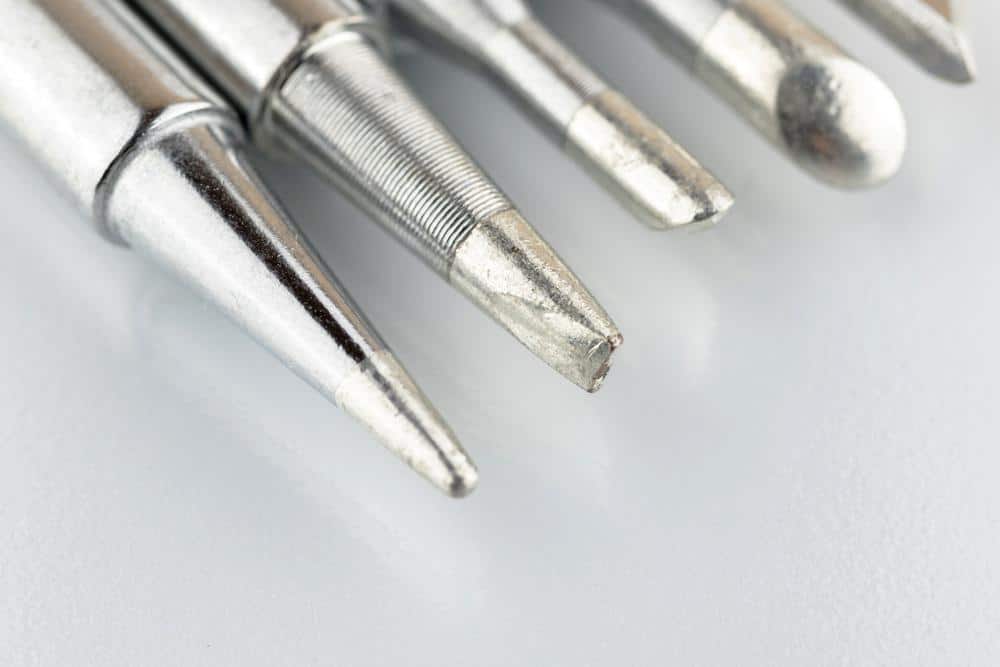
4. Proper Soldering Techniques for Circuit Boards
Soldering circuit boards demands precision and skill to ensure reliable connections without damaging sensitive components. To achieve successful soldering, it’s essential to follow proper techniques. Below, we outline the steps and tips for mastering soldering on circuit boards.
I. Preparing the Circuit Board
- A. Cleaning and Inspection
- Begin by cleaning the circuit board to remove any dust, debris, or contaminants.
- Inspect the board for damaged or loose components that may need repair before soldering.
- B. Secure Components
- Ensure all components are correctly placed and secured in their designated positions.
- Use a helping hand or clamp to hold components in place during soldering.
II. Preparing the Soldering Iron
- A. Temperature Settings
- Set the soldering iron to the appropriate temperature for your solder and components.
- Allow it to reach the desired temperature for consistent results.
- B. Tinning the Tip (H2)
- Apply a small amount of solder to the tip of the iron to “tin” it.
- Tinning helps with heat transfer and improves solder flow.
III. Soldering Components
- A. Heat Transfer
- Gently touch the soldering iron tip to both the component lead and the pad on the circuit board.
- Allow a moment for heat to transfer evenly.
- B. Apply Solder
- Apply a small amount of solder to the joint, ensuring it touches both the lead and the pad.
- Maintain a steady hand to create a clean, even solder joint.
- C. Avoid Excess Solder
- Be cautious not to over-solder, which can lead to solder bridges or excess solder blobs.
- Use a solder wick or a solder sucker to remove excess solder if needed.
- D. Inspect Joints
- After soldering, visually inspect each joint for irregularities, such as cold joints or incomplete connections.
- Reheat and reflow any problematic joints as necessary.
IV. Avoiding Common Mistakes
- A. Overheating Components
- Minimize the time the soldering iron is in contact with components to prevent damage.
- Use heat sinks if necessary to protect sensitive parts.
- B. Solder Bridges
- Avoid creating unintentional connections between adjacent pads or leads.
- Use flux to prevent solder from flowing where it shouldn’t.
V. Cleanup and Finishing
- A. Cleaning Residue
- Remove any flux residue or excess solder carefully using isopropyl alcohol and a brush.
- Ensure the circuit board is clean and free of contaminants.
VI. Practice and Patience
Mastering soldering techniques for circuit boards takes practice and patience. Start with less critical projects to build your skills and confidence. Over time, you’ll become adept at creating reliable solder connections while safeguarding delicate components.
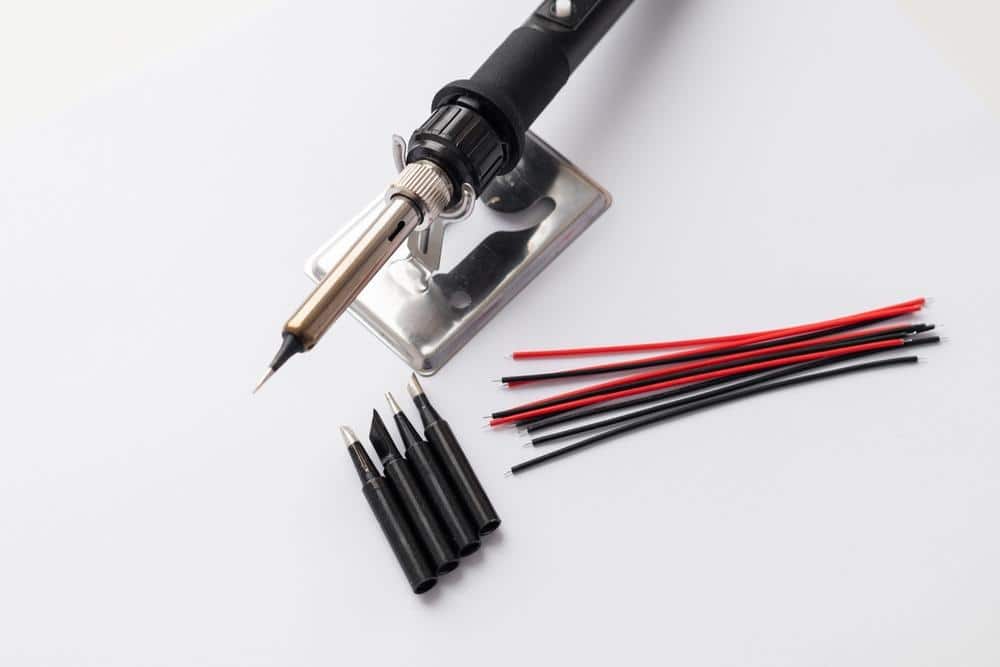
5. Maintenance and Care Tips for Soldering Iron Tips
Maintaining and caring for your soldering iron tip is essential for ensuring its longevity and performance, especially when working on delicate circuit boards. Proper maintenance practices can extend the life of your soldering iron tip and help you achieve clean and precise solder joints. Here are some valuable tips for taking care of your soldering iron tip:
I. Cleaning and Re-Tinning
- A. Regular Cleaning
- After each use, clean the soldering iron tip with a brass wire sponge or damp sponge.
- Remove any residual solder and flux residue to prevent oxidation.
- B. Re-Tinning
- Periodically re-tin the soldering iron tip by applying a thin layer of solder to it.
- Re-tinning helps maintain the tip’s thermal efficiency and prevents oxidation.
II. Storage and Handling
- A. Proper Storage
- Store your soldering iron in a dry and clean environment to prevent moisture and corrosion.
- Use a dedicated holder or stand to keep the tip elevated when not in use.
- B. Avoiding Excessive Heat
- Avoid leaving the soldering iron at high temperatures for extended periods when not in use.
- Please turn it off or reduce the temperature when taking breaks to prevent tip damage.
III. Avoiding Mechanical Stress
- A. Gentle Handling
- Handle the soldering iron with care to avoid dropping it or subjecting it to mechanical stress.
- Protect the tip from accidental impacts that could cause damage.
- B. Avoid Abrasive Surfaces
- Don’t touch the soldering iron tip to abrasive surfaces, as this can wear down the tip.
- Use a designated cleaning sponge or brass sponge for tip cleaning.
IV. Using Quality Solder and Flux
- A. Quality Solder
- Choose high-quality solder with the appropriate composition for your work.
- Low-quality solder can leave residues that affect tip performance.
- B. Flux Considerations
- Use flux when necessary to improve solder flow and prevent oxidation.
- Be mindful of the type of flux used, as some may require more thorough cleaning.
V. Regular Inspection
- A. Tip Condition
- Periodically inspect the soldering iron tip for signs of wear, corrosion, or oxidation.
- Replace the tip if it shows significant damage.
- B. Component Sensitivity
- Be aware of the components you’re soldering, especially if they are sensitive to heat.
- Adjust your soldering technique accordingly to minimize stress on components.
By following these maintenance and care tips, you can ensure that your soldering iron tip remains in optimal condition, allowing you to achieve precise and reliable soldering on circuit boards and other electronic projects. Proper care of your tools is an essential aspect of quality workmanship in electronics.
6. Troubleshooting Soldering Issues
Soldering on circuit boards can sometimes be challenging, and even experienced individuals may encounter issues. Troubleshooting soldering problems is a crucial skill that ensures the quality and reliability of your electronic assemblies. Below, we’ll explore common soldering issues and how to address them effectively.
I. Cold Joints
- A. Symptoms
- Dull or grainy solder joints.
- Lack of adhesion to both the component lead and the pad.
- B. Causes
- Need for more heat or contact time.
- Contaminated surfaces or inadequate flux.
- C. Solution
- Reheat the joint and ensure proper heat transfer.
- Apply additional solder and flux if needed to create a smooth, shiny joint.
II. Solder Bridges
- A. Symptoms
- Unintended connections between adjacent pads or leads.
- Visible solder linking components.
- B. Causes
- Excessive solder applied or solder not properly wicked away.
- Inadequate spacing between components.
- C. Solution
- Use a solder wick or a solder sucker to remove excess solder and bridges.
- Ensure proper component spacing to prevent future bridges.
III. Overheating Components
- A. Symptoms
- Damage or discoloration of sensitive components.
- Component malfunction or failure.
- B. Causes
- Excessive heat is applied for an extended period.
- Inadequate use of heat sinks or heat shielding.
- C. Solution
- Use heat sinks or heat shields to protect sensitive components.
- Practice quicker soldering techniques to minimize heat exposure.
IV. Incomplete Solder Joints
- A. Symptoms
- Solder joints appear partially formed or lack adhesion.
- Components may not be securely attached.
- B. Causes
- Insufficient solder applied or poor heat transfer.
- Contaminated surfaces or inadequate flux.
- C. Solution
- Reheat the joint, ensuring proper heat transfer for complete soldering.
- Apply additional solder and flux as needed to create a reliable connection.
V. Insufficient Flux
- A. Symptoms
- Solder does not flow smoothly or forms irregular shapes.
- Increased difficulty in soldering.
- B. Causes
- Insufficient or expired flux on the solder or the components.
- Flux residue needs to be adequately cleaned.
- C. Solution
- Apply fresh flux to the joint to improve solder flow.
- Ensure thorough cleaning of flux residues after soldering.
Troubleshooting soldering issues is an integral part of the soldering process. By identifying and addressing these common problems, you can enhance the quality of your solder joints and ensure the reliability of your circuit board assemblies. Practice and experience are vital to becoming proficient in troubleshooting and achieving consistent, high-quality soldering results.
7. Safety Considerations
When it comes to soldering on circuit boards, ensuring safety is paramount. Soldering involves high temperatures and potentially harmful substances, so taking the necessary precautions is essential. Here are some safety considerations to keep in mind:
I. Soldering Safety Precautions
- A. Eye Protection
- Always wear safety goggles or glasses to protect your eyes from hot solder and debris.
- B. Ventilation
- Work in a well-ventilated area or use a fume extractor to prevent inhaling solder fumes.
- C. Heat Protection
- Wear heat-resistant gloves to protect your hands from burns.
- D. Fire Safety
- Have a fire extinguisher nearby, especially when soldering near flammable materials.
II. Proper Ventilation
- A. Fume Extraction
- Use a fume extractor or soldering station with built-in ventilation to remove harmful fumes from the workspace.
- B. Avoiding Inhaling Fumes
- Position your face away from the soldering fumes and ensure good airflow.
III. ESD Protection
- A. ESD-Safe Workspace
- Create an electrostatic discharge (ESD)-safe workspace to prevent damage to sensitive components.
- B. ESD Wrist Strap
- Wear an ESD wrist strap to discharge static electricity before touching electronic components.
IV. Proper Handling of Solder
- A. Lead-Free Solder
- If using lead-free solder, be aware of the potential health hazards and handle it with care.
- B. Wash Hands
- Wash your hands thoroughly after handling solder to avoid ingesting any lead residues.
V. Equipment Safety
- A. Soldering Iron Safety
- Use a soldering iron with proper safety features, such as a heat-resistant handle and a stable stand.
- B. Cord Safety
- Ensure that the soldering iron’s power cord is in good condition and not damaged.
- C. Unplug When Not in Use
- Always unplug the soldering iron when it’s not in use to prevent accidents.
VI. Work Surface
- A. Heat-Resistant Surface
- Use a heat-resistant work surface or soldering mat to protect your workspace from heat damage.
- B. Organization
- Keep your workspace organized to prevent accidents and maintain a clear area for soldering.
Taking these safety considerations seriously is crucial when soldering on circuit boards. By following safety protocols, you can protect yourself, your workspace, and the electronic components you’re working on, ensuring a safe and successful soldering experience.
8. FAQs (Frequently Asked Questions)
QI: How do I choose the correct soldering iron tip size for circuit board work?
AI: The size of the soldering iron tip depends on the components you are working with. Smaller tips are suitable for fine-pitch parts, while larger tips are more suitable for larger soldering jobs that require more heat.
QII: Can I use any soldering iron tip with my soldering iron?
AII: Not all soldering iron tips are compatible with every soldering iron. It’s important to check the documentation or manufacturer’s guidelines for your soldering iron to identify the types of compatible tips.
QIII: What is the benefit of using a temperature-controlled soldering iron?
AIII: Temperature-controlled soldering irons allow you to adjust the heat output according to the requirements of your soldering task. This helps minimize the risk of overheating or damaging sensitive components.
QIV: How should I maintain my soldering iron tip?
AIV: To maintain your soldering iron tip, treat it as hot, even when not in use, to prevent oxidation. Avoid applying excessive pressure, and clean the tip regularly by wiping it with a damp sponge.
9. Conclusion
In conclusion Best Soldering Iron Tip For Circuit Boards, Choosing the best soldering iron tip for circuit boards is essential for achieving precise, reliable, and efficient soldering results. By considering the tip’s compatibility, style, size, and temperature control, you can enhance your soldering experience and ensure successful circuit board work. Remember to follow the recommended tips for using soldering iron tips and explore the recommended options based on your specific requirements.









